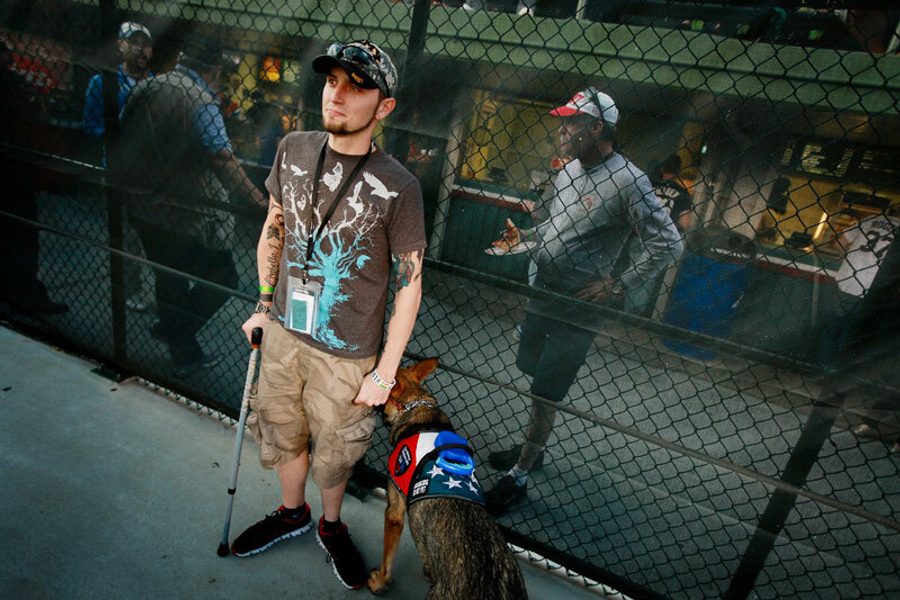Striking Back at Drone Attacks
Why has there been so little organized resistance to drone warfare?
Rebecca Burns

At an October 2011 meeting between Pakistani elders and human rights lawyers, 16-year-old Tariq Aziz stood up to volunteer for a dangerous assignment. The meeting, held in Islamabad by U.K. legal charity Reprieve, sought to expose the impact of drone strikes in the North Waziristan region, and Aziz hoped that by learning to photograph the strikes he could help protect his community.
Three days later, Aziz, along with his 12-year-old cousin, were themselves killed in a drone strike while on their way to pick up their aunt.
Aziz’s determination to document the devastation caused by drones belies one of the most disturbing aspects of their use: U.S. drone strikes are carried out in secret in at least six countries, with no judicial or Congressional oversight of the targets chosen by administration officials. Though a 2011 report from the Bureau of Investigative Journalism found that up to 3,000 people — as many as 781 of them civilians — have been killed in drone attacks since 2004, noncombatant deaths in drone attacks were denied outright by U.S. officials until April of this year, when White House counterterrorism advisor John Brennan said that they were “exceedingly rare.”
U.S. and Pakistani activists have pushed for more information about why Aziz was selected as a target. But while victims’ names are often unknown by the public, the occurence of drone strikes has for years been an open secret, raising another question: Why, as the Obama administration has granted authority to the CIA and Pentagon to carry out strikes based only on the patterns of their victims’ behavior, has there been so little organized resistance to drone warfare?
The peace movement, floundering in the wake of Obama’s election — a 2011 study by Michael Heaney and Fabio Rojas notes that while his win was heralded as an anti-war victory, it demobilized large numbers of Democratic activists — was unprepared to respond to a shift in the way the U.S. wages wars. While many organizers praised Obama for completing the withdrawal from Iraq, military force with a “lighter footprint” was part of the new defense strategy announced soon afterward. Under the Obama administration, a drone strike has occurred an average of once every four days in Pakistan.
As drones have fast become the weapon of choice — 7,000 are already in use by the U.S. military, and 45 other countries are developing their own drone programs — the technology of warfare has vastly outpaced the laws governing its use. Groups like the International Committee for Robotic Arms Control (ICRAC) are advocating a new international regime to limit the use of drones. Such a framework would also place an outright ban on one of the most unsettling possibilities of robotic warfare: nuclear weapons being mounted on unmanned systems.
But this solution alone may be insufficient to reverse the underlying trend behind drone attacks: an increasingly privatized mode of combat that involves hundreds of contractors in intelligence analysis and other activities influencing the ultimate decision of whom to kill.
“The policy of contracting out war began before drone technology emerged, but the availability of drones has accelerated that trend,” says David Cortright, director of policy studies at the Kroc Institute for International Peace Studies. “By lowering the threshold of engagement … drones are contributing to the evolution of a state of permanent war.”
The flipside of an expanding drone war abroad is a deepening surveillance regime at home. Combat drones make up only a fraction of the $6 billion industry, which is already marketing aerial drones to law enforcement agencies. Peace activists hope that the merging of counterterrorism and domestic law enforcement will raise alarms among privacy advocates and help build a broader coalition. “The fact that there’s a threat of drones coming back to the United States gives us an opportunity to talk about drones overseas,” says Medea Benjamin of Code Pink, who helped organize a “drone summit” in April that brought human rights and civil liberties groups together with robotics experts. She is also planning a delegation to Pakistan to meet with drone survivors this fall.
But even as public support for the war in Afghanistan has fallen to an all-time low, 83 percent of Americans still support the Obama administration’s drone program, according to a recent poll. With little information available to the public about where drones strikes are being deployed, peace activists are stepping up efforts to oppose them where they originate. In April 2009, 14 activists were arrested at Creech Air Force Base, headquarters of the U.S. Air Force’s 432nd Air Wing of Predator and Reaper drones. The trial of the “Creech 14,” charged with trespassing, resulted in extensive testimony on the illegality of drones and has inspired regular protests at the air base.
“If the peace community doesn’t even realize the extent of this, then the general public certainly doesn’t,” says Brian Terrell, one of the arrested activists. “Taking this issue out of the darkness and putting it into the light is absolutely crucial.”

I hope you found this article important. Before you leave, I want to ask you to consider supporting our work with a donation. In These Times needs readers like you to help sustain our mission. We don’t depend on—or want—corporate advertising or deep-pocketed billionaires to fund our journalism. We’re supported by you, the reader, so we can focus on covering the issues that matter most to the progressive movement without fear or compromise.
Our work isn’t hidden behind a paywall because of people like you who support our journalism. We want to keep it that way. If you value the work we do and the movements we cover, please consider donating to In These Times.
Rebecca Burns is an In These Times contributing editor and award-winning investigative reporter. Her work has appeared in Bloomberg, the Chicago Reader, ProPublica, The Intercept, and USA Today. Follow her on Twitter @rejburns.








